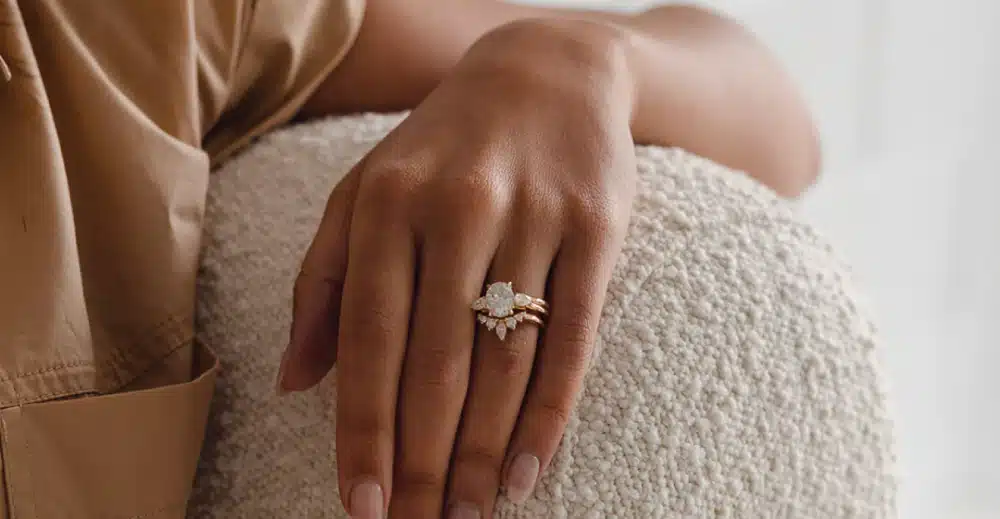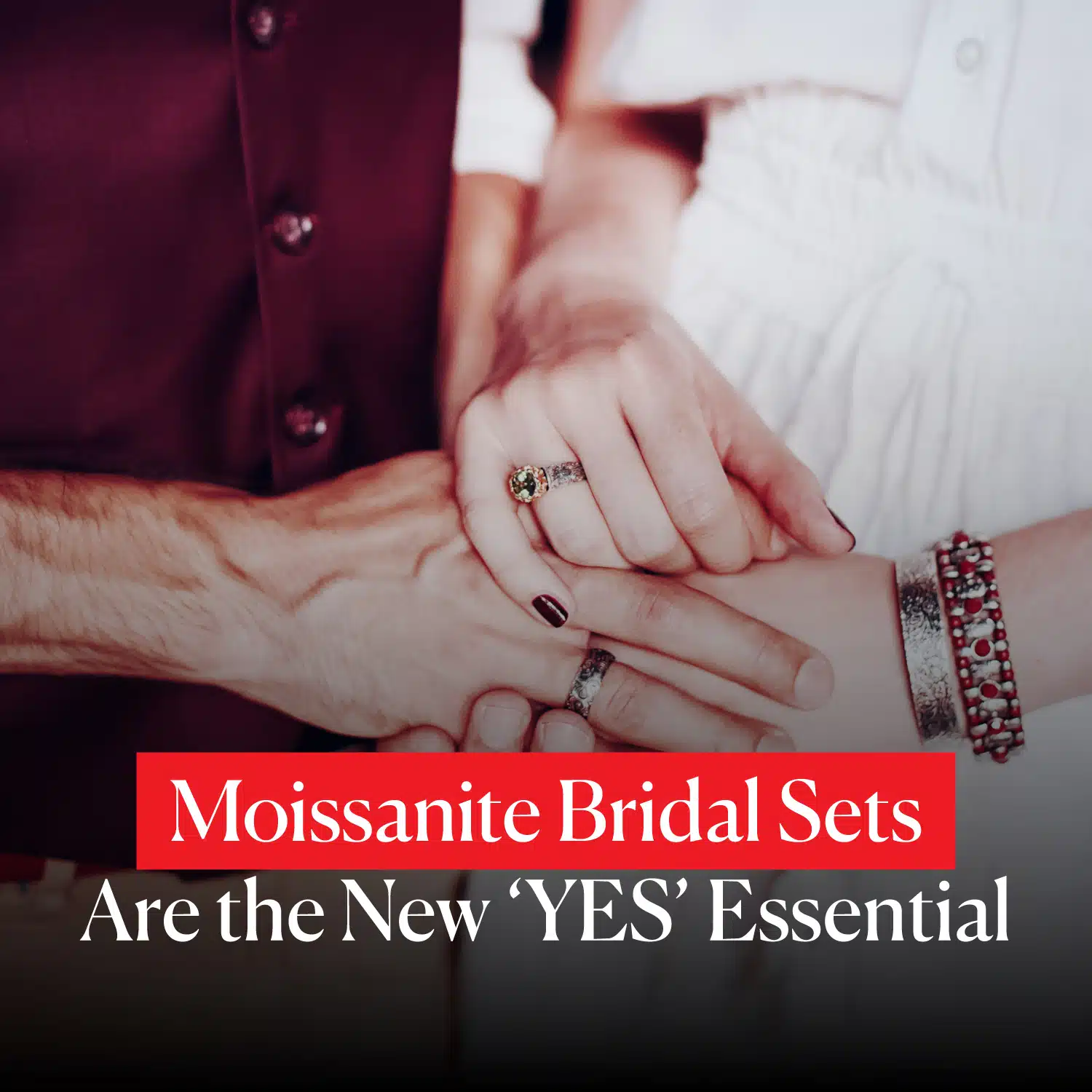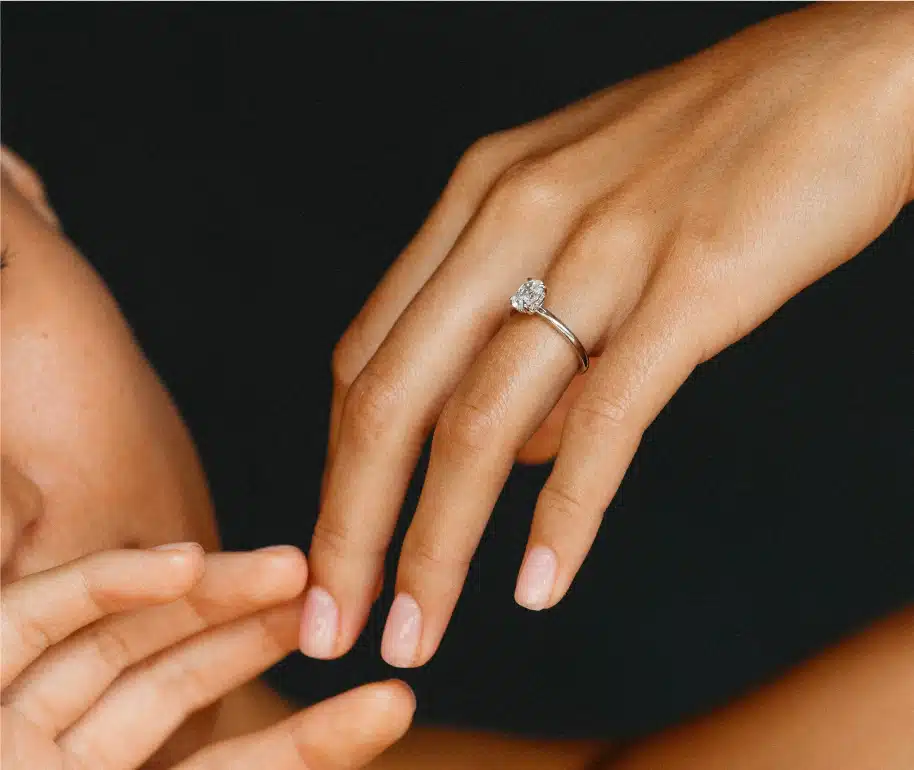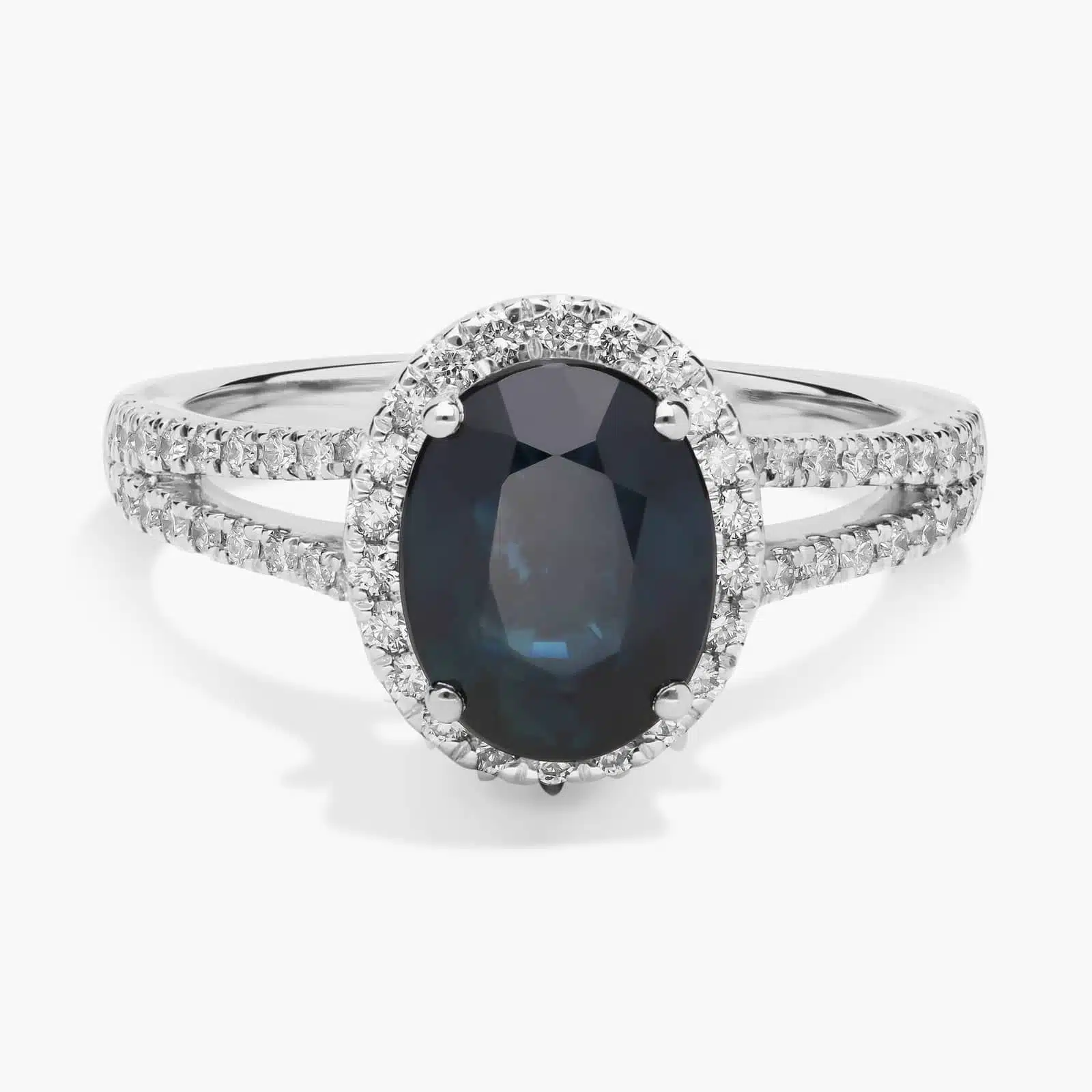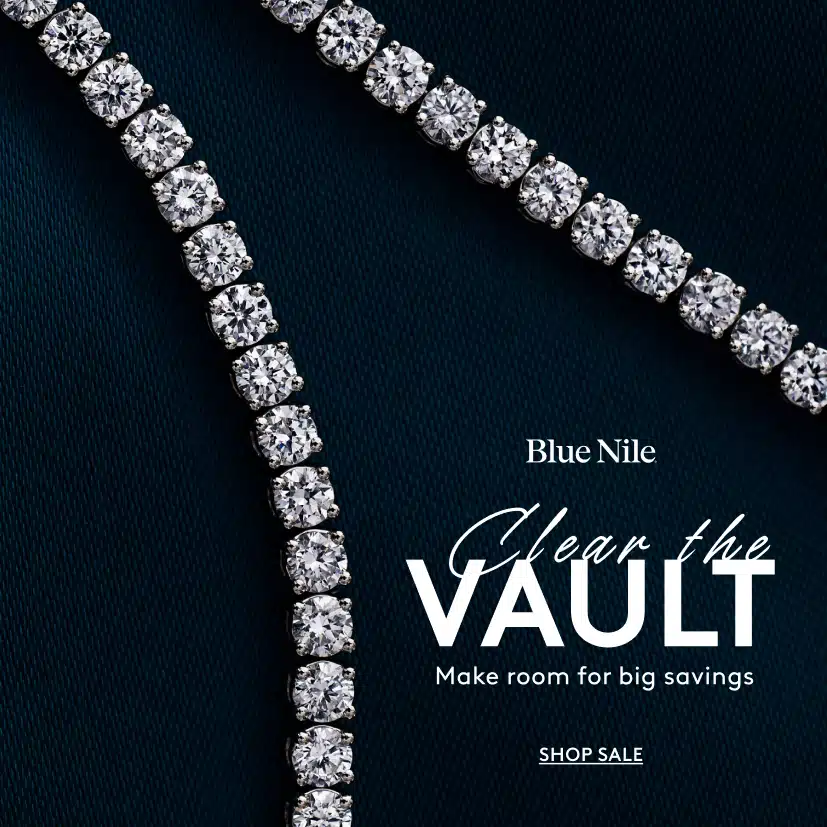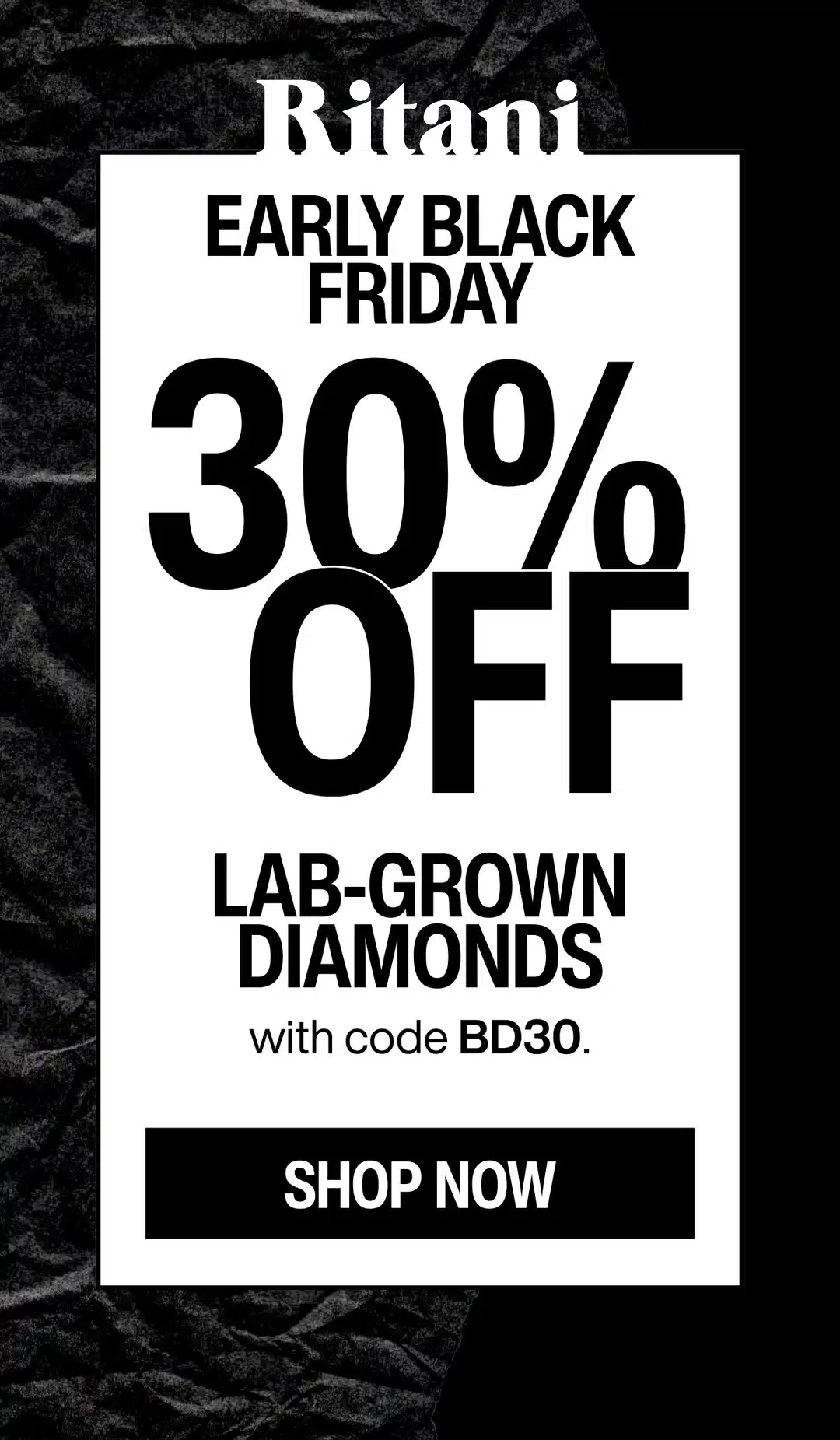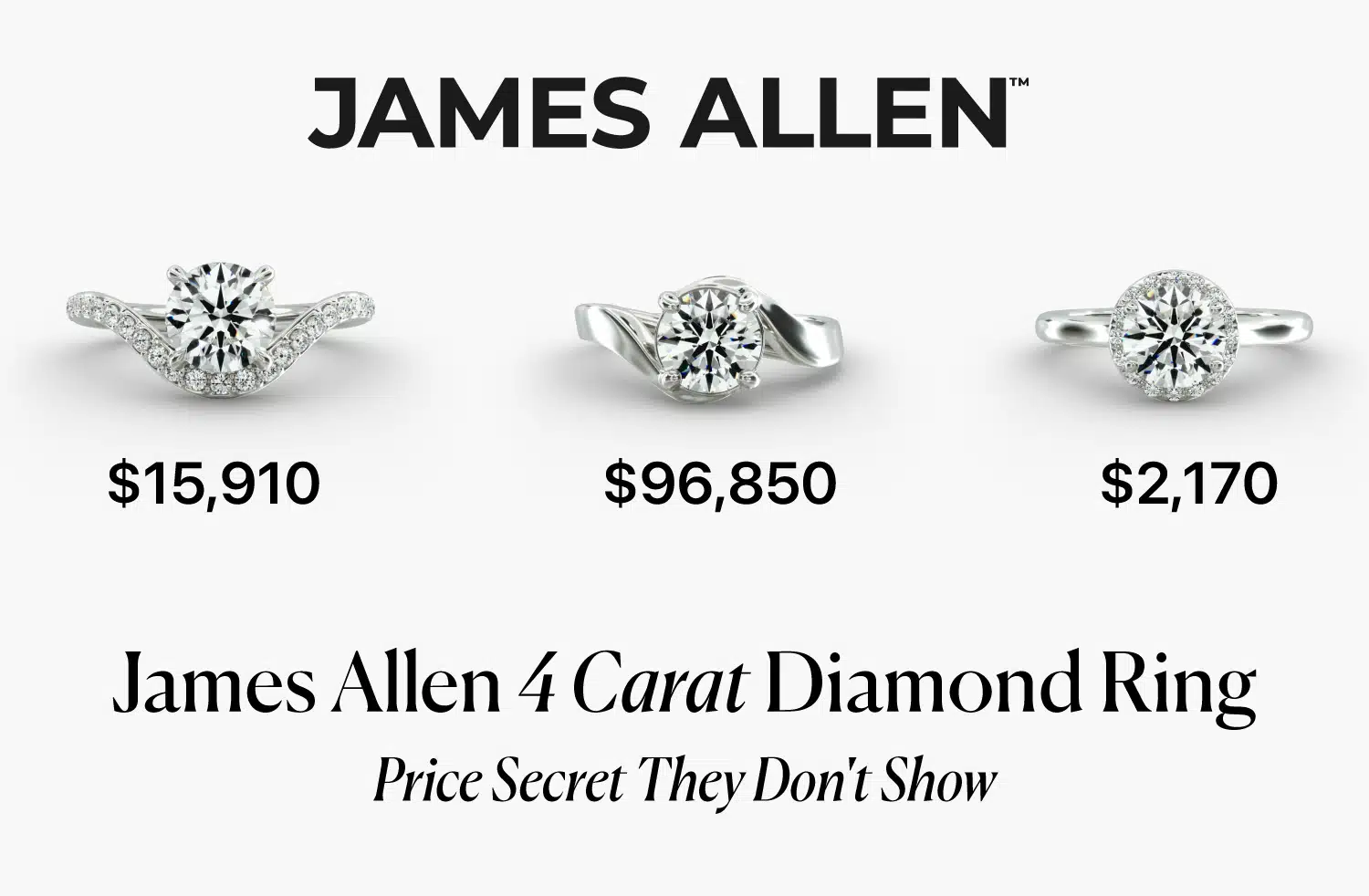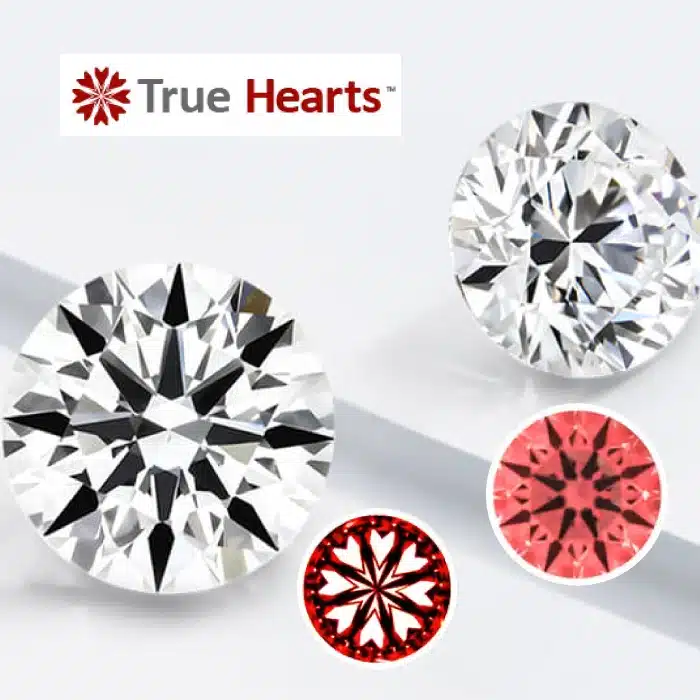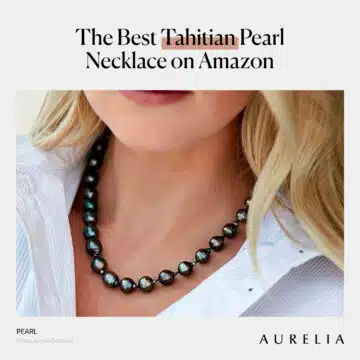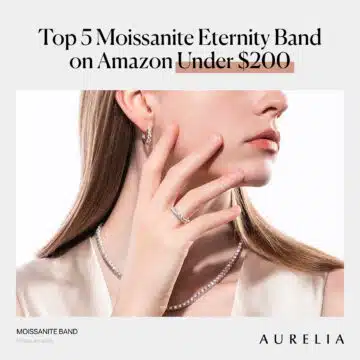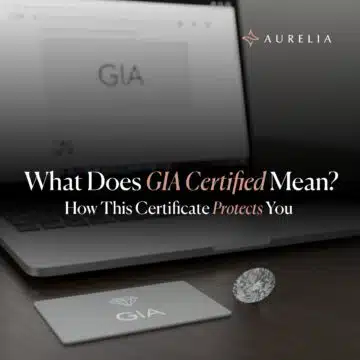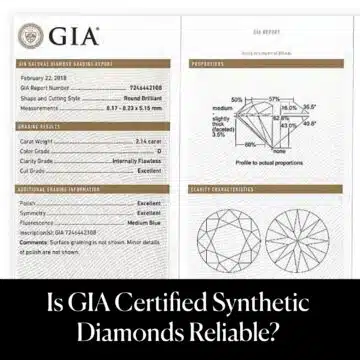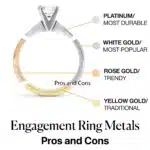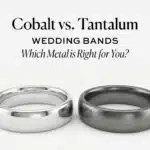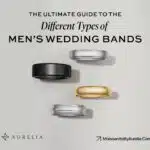You can absolutely get the show-stopping look of a James Allen 4 carat diamond ring, but the “secret” they don’t explicitly show you is that there are three paths to that dream, with price tags ranging from nearly six figures to less than a new laptop.
Let’s be honest. We’ve all done it. You go to the James Allen website, set the carat filter to “4.00,” and your jaw hits the floor. The price looks like a typo, a number so huge it feels unreal. My goal today isn’t to review one ring; it’s to embark on a quest.
Deal Alert: Black Friday! Get up to 40% OFF fine jewelry at Blue Nile !
One In A Lifetime Sale: “Clear The Vault” – Get up to 70% OFF on select jewelry at Blue Nile !
Exclusive Offer: Lock in a gorgeous ring! Get up to 20% OFF engagement ring settings at James Allen .
We’re going on a mission to achieve that one, single goal—a massive, head-turning, 4-carat look—using three different gemstones available right on their site.
I’m going to pull back the curtain on a Natural Diamond, a Lab-Grown Diamond, and a Moissanite to show you how that “impossible” dream ring might be much, much closer than you think.
Diamond IQ Test: Natural or Lab-Grown?
Two identical diamonds: GIA Certified, 1.51ct, D Color, VVS1, Ideal Cut. One is natural ($16,530), the other is lab-grown ($2,390). Choose the diamond you like better and see if you can match it to its origin.
Your Quest: The Heirloom, The Modern Marvel, and The Savvy Secret
Before we can compare, we need to understand the contenders. Think of this not just as choosing a ring, but as choosing a philosophy. Your mission, should you choose to accept it, is to find a ring with a massive, jaw-dropping, 4-carat look. But on James Allen’s incredible platform, there isn’t just one path to that goal. There are three.
Each path offers a completely different blend of origin, science, and value. Let’s meet the three champions we’ll be analyzing in this ultimate showdown.
The Heirloom: The Natural Diamond Path
This is the path of tradition, of legacy, of a billion-year-old treasure unearthed from the depths of the earth. A natural diamond isn’t just a stone; it’s a piece of the planet’s history, a symbol of enduring, natural love that has been the standard for centuries.
When you choose a natural diamond, you are choosing rarity and a connection to the timeless story of geology and romance.
Our Contender: For this path, we’re looking at a magnificent 4.00 Carat, H-Color, VS1-Clarity, Excellent Cut Round Diamond, set in a classic and weighty platinum solitaire band. Every one of those terms is crucial, which you can learn about in my guide to the 4 Cs of Diamonds.
This is the pinnacle of traditional luxury, the kind of ring you’d expect to see in a magazine. It is the undisputed heavyweight champion, with a price tag to match.
Deal Alert: Black Friday! Get up to 40% OFF fine jewelry at Blue Nile !
One In A Lifetime Sale: “Clear The Vault” – Get up to 70% OFF on select jewelry at Blue Nile !
Exclusive Offer: Lock in a gorgeous ring! Get up to 20% OFF engagement ring settings at James Allen .
The Modern Marvel: The Lab-Grown Diamond Path
This is the path of science, of innovation, of human ingenuity creating something beautiful and pure. Let’s be crystal clear: a lab-grown diamond is not a fake diamond.
It is chemically, physically, and optically identical to a natural diamond. The only thing that separates them is their origin story—one came from the earth, the other from a state-of-the-art lab. It’s a true modern marvel.
Our Contender: Our lab-grown champion is a spectacular 4.00 Carat Lab-Grown Diamond in an intricate pavé setting. And here’s the kicker: this diamond is actually higher quality than our natural contender.
It boasts a perfect D-Color (the highest grade possible) and a VVS1-Clarity (a step above VS1). This is where the value proposition hits you like a ton of bricks: you’re not just getting the same size for less money; you’re getting a better quality stone.
It’s a crucial point of difference that we explore in our Moissanite vs. Lab Diamond side-by-side comparison.
James Allen is a top leader in online diamond sales, offering cutting-edge imaging technology that lets you inspect diamonds as if you were using a jeweler's loupe. With the largest exclusive selection of loose diamonds available online and excellent pricing, they also boast one of the finest collections of lab-created diamonds on the market. They currently run a 25% discount on selected lab-grown diamonds!
WHAT WE LOVE ABOUT THEM:
- 30-day no-questions-asked return policy, with a prepaid shipping label provided by James Allen.
- Lifetime warranty on all purchases.
- Free international shipping.
- Complimentary prong tightening, repolishing, rhodium plating, and cleaning every six months.
- Insurance appraisals included with purchases.
- One free resizing within 60 days of purchase.
- Free ring inscriptions available.
- Best-in-class high-quality imagery for every diamond in stock.
- 24/7 customer support.
- Premium, best-in-class packaging.
The Savvy Secret: The Moissanite Path
This is the path for the person who values brilliance and budget above all else. This is the insider’s choice. It’s crucial to understand that moissanite is not a diamond simulant in the cheap, cubic-zirconia sense.
Moissanite is a completely separate, magnificent gemstone in its own right, born from a fallen meteorite. It is known for one thing above all others: its insane, fiery brilliance. In fact, many experts (myself included) agree it’s often more sparkly than a diamond.
Our Contender: Because James Allen’s inventory tops out just under 2.5 carats for this shape, our moissanite contender is a stunning 2.48 Carat Round Moissanite in a brilliant pavé halo setting. Now, don’t get hung up on the carat weight.
Because of its different density, we look at measurements. This moissanite is 9.05mm across, giving it the same visual “face-up” size as a much larger diamond. It’s all about achieving that “wow” factor, which is the core of our Moissanite Diamond Engagement Rings Guide. This ring promises to deliver the biggest look for the smallest investment.
Now that we’ve met our three contenders, we’re going to break them down piece by piece. We’ll analyze their GIA certificates, the craftsmanship of their settings, and most importantly, the price you’ll pay for each.
It’s a deep-dive analysis that is only possible because we have total confidence in the platform itself, a trust we built and verified in our complete James Allen Review. Let the showdown begin.
The Natural Path: A $96,850 GIA-Certified Masterpiece
Let’s begin at the summit. Before we talk about value alternatives, we must first pay respect to the benchmark, the dream, the undisputed heavyweight champion of luxury: the natural diamond ring.
This isn’t just a piece of jewelry; it’s a statement. It’s a tangible piece of the earth’s history, a billion-year-old crystal that represents the pinnacle of tradition and rarity.
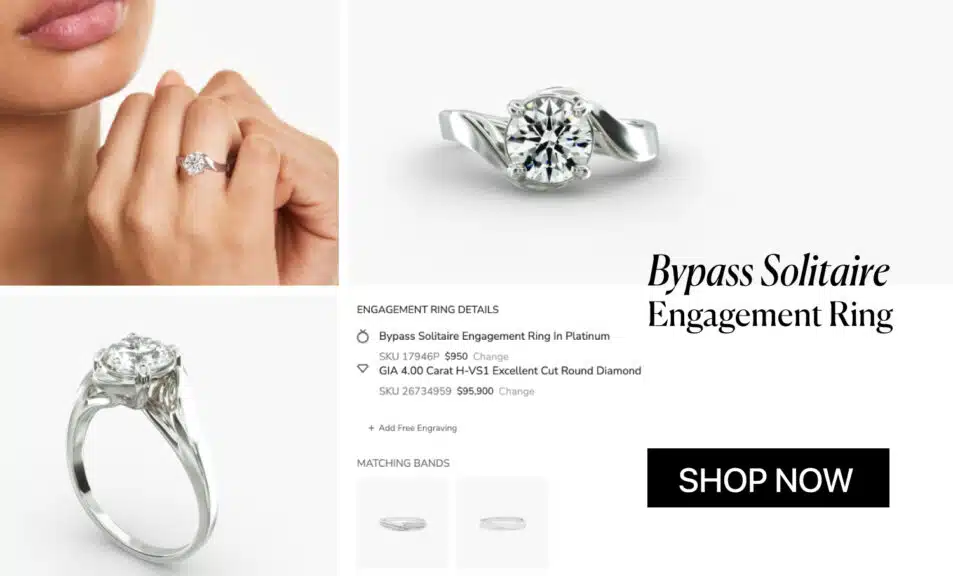
And with a price tag of $96,850, it carries the weight of that legacy. But as a jeweler, I want you to understand that this price isn’t arbitrary. Let’s put on a loupe and analyze exactly what makes this specific ring command such a price.
Analyzing the Diamond: The 4.00 Carat H-VS1 Masterpiece
The heart and soul of this ring—and the source of nearly all its value—is the diamond itself. It’s a magnificent stone, and its GIA certificate tells a story of incredible quality. Let’s break down the language of that report into what it means for you.
The first thing you notice is its sheer size. A 4.00 carat diamond is a profoundly significant stone. It has a diameter of over 10 millimeters, giving it a massive, jaw-dropping presence on the finger. This isn’t just a sparkle; it’s a statement of significance that can be seen from across the room.
To get a real sense of how that size translates to a real hand, you need to see a Diamond Carat Size Chart, but trust me: this is a major league stone.
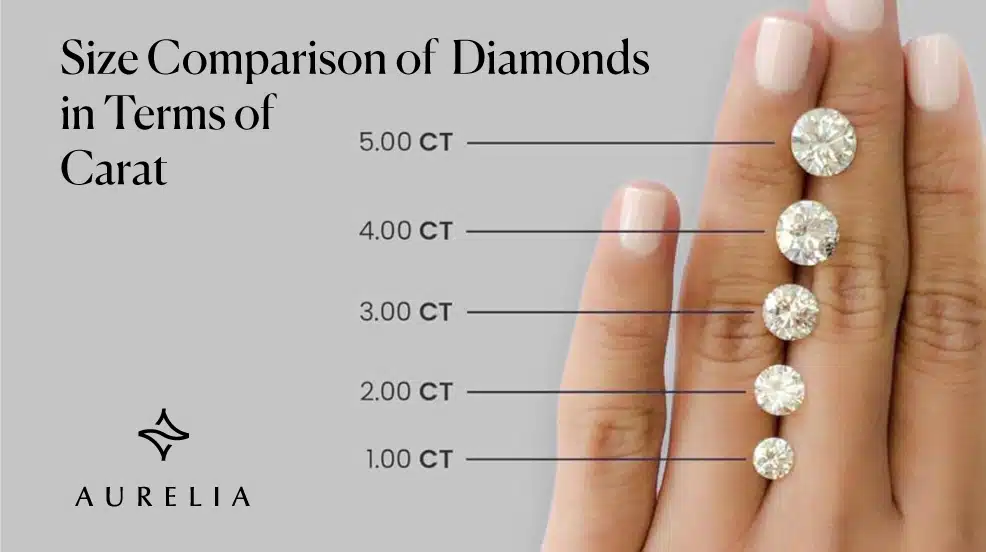
This is the single most important factor, and this diamond has the best. An “Excellent” Cut grade from the GIA means a master craftsman has sculpted its facets to perfect, mathematical proportions. Why does this matter? The cut is the engine that drives a diamond’s sparkle.
It dictates how light enters the stone, bounces around internally, and explodes back out to your eye as fire and brilliance. An average cut on a big diamond will look lifeless, but an Excellent cut—as detailed in our Diamond Cut Chart guide—makes a 4-carat stone look like a supernova.
This is where smart, high-end buyers make their money. This diamond has an H-Color grade. On the GIA scale, that sits at the top of the “Near Colorless” range. To the naked eye, an H-color diamond will appear perfectly icy-white.
The only way you could detect a hint of warmth is if you placed it next to a D-color diamond under the harsh lights of a gem lab.
By choosing an H-color, you get a visually perfect diamond without paying the massive premium for the “collection-grade” colorless stones, a strategy we detail in our H-Color Diamond guide.
The final piece of the quality puzzle is its VS1-Clarity. This stands for “Very Slightly Included,” meaning there are microscopic inclusions inside the diamond that are extremely difficult to see even for a trained grader under 10x magnification.
To you and me, it is perfectly “eye-clean.” There are absolutely no visible flaws. For a deep-dive on what this means for your budget, my VS1 vs. VS2 Diamond guide is a must-read. A VS1 is the perfect sweet spot, delivering a visually flawless diamond without the staggering cost of a truly flawless stone.
Analyzing the Setting: The Platinum Bypass Solitaire
A diamond of this caliber requires a setting that is both beautiful and incredibly secure. James Allen has chosen their elegant Bypass Solitaire, and for good reason.
The “bypass” style, where the band sweeps up to meet the diamond from opposite sides, creates a graceful sense of motion and elegance, drawing your eye right to the masterpiece in the center. But the most important choice here is the metal.
For a stone of this value, platinum isn’t just an option; it’s the only responsible choice.
- Ultimate Strength & Security: Platinum is denser and stronger than gold. The prongs holding that $96,000 diamond will be more durable and less prone to bending, offering maximum security.
- Pure, Natural White: Platinum is a naturally white metal. Its cool, silvery hue will never fade or change color, ensuring it enhances the diamond’s brilliance without casting any yellowish tint into it.
- Substantial Weight & Feel: A platinum ring feels significant on the finger. That heft provides a constant, reassuring reminder of the quality and permanence of the piece.
The Verdict: Who is This $96,850 Ring For?
Let’s be perfectly honest. This ring is not for the person who is simply looking for a beautiful piece of jewelry. This is for the purist. This is for the person for whom the story of a billion-year-old crystal, unearthed from the earth and crafted by both nature and man, is the most important part of the equation.
This is a true heirloom piece. You are not just buying a stone; you are buying rarity, legacy, and a piece of the earth’s history. It’s for the buyer whose budget is not the primary constraint, and whose heart is set on the timeless, traditional romance of a natural diamond. It is, in every sense of the word, a masterpiece.
The Modern Path: A $15,910 D-VVS1 Lab-Grown Stunner
Alright, take a deep breath. Because what we’re about to see is where the diamond world gets turned completely on its head. We’ve established the benchmark with the breathtaking, traditional, and aspirational $96,850 natural diamond ring.
Now, I want you to look at a ring with a price tag of $15,910.
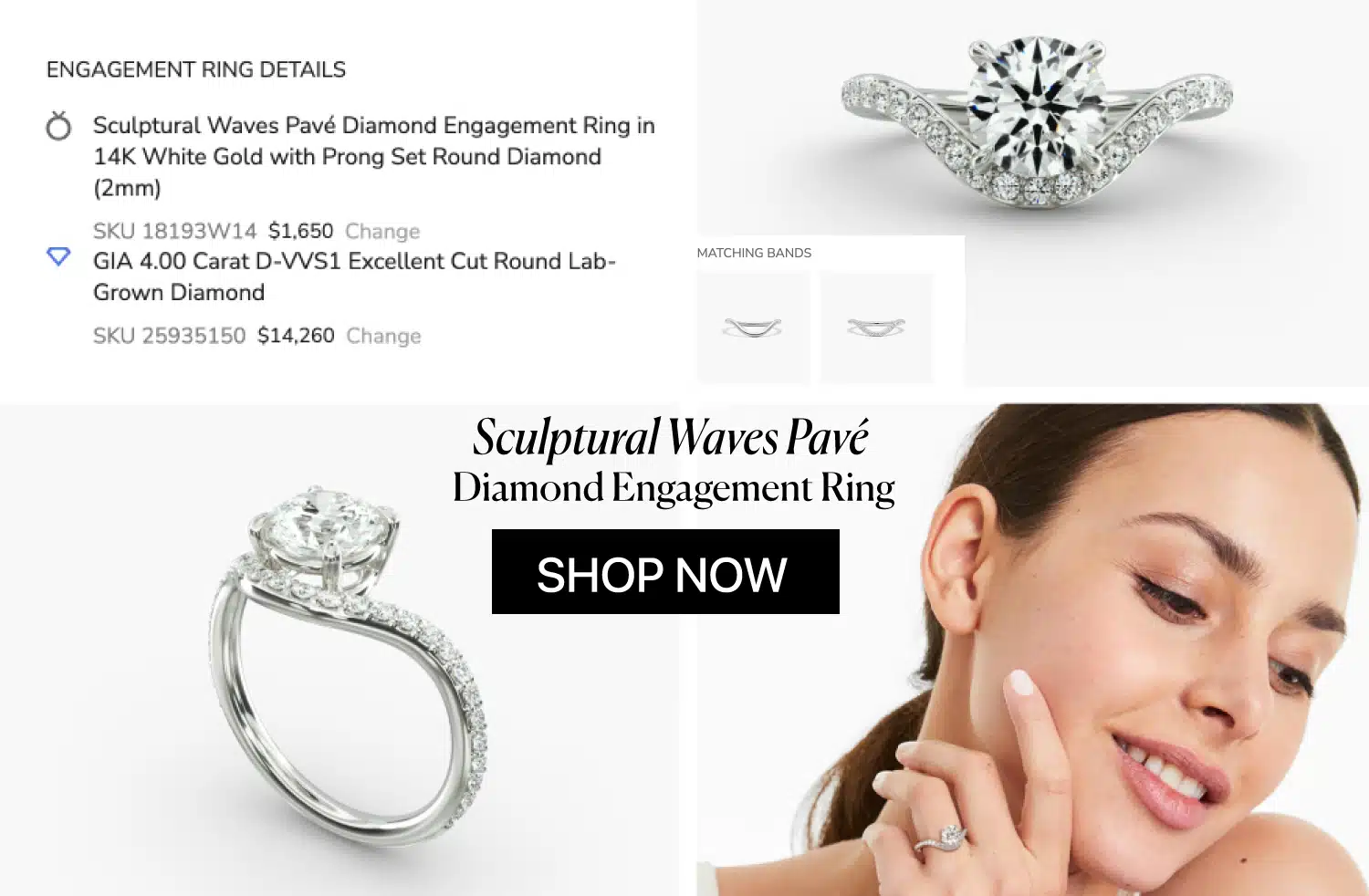
That’s not a typo. That’s an 84% reduction in price. And here’s the secret that the jewelry industry has been grappling with for the last few years: for that massively lower price, you are not getting a lower quality ring. In fact, in this case, you are getting one that is measurably better.
Let’s put this modern marvel under the loupe.
Analyzing the Diamond: The 4.00 Carat D-VVS1 Powerhouse
The first question I know you’re asking is, “Okay, Mehedi, but is it a real diamond?” The answer is a definitive, scientific yes. A lab-grown diamond is chemically, physically, and optically identical to a diamond mined from the earth.
Think of it like a perfect orchid grown in a high-tech greenhouse versus one found in a jungle—they are both undeniably orchids. For a complete breakdown, my guide to the types of lab-grown diamonds covers this in detail.
With that out of the way, let’s look at the GIA certificate for this 4.00-carat lab-grown stone and see how it stacks up against its $96,850 natural cousin. This is where the “wow” moment really happens.
The natural diamond had an excellent H-Color grade. This lab diamond has a D-Color grade. D is the single highest color grade a diamond can receive. It is absolutely, perfectly, and pristinely colorless. It’s like looking at a drop of pure, frozen water.
You are not just matching the quality of the natural stone; you are getting a color grade that is four full grades higher. This is the icy-white perfection that diamond lovers dream of, a topic I gush about in my D Color Diamond guide.
The natural diamond had a fantastic, eye-clean VS1-Clarity. This lab diamond has a VVS1-Clarity grade. That stands for “Very, Very Slightly Included,” and it is a significant step up. The microscopic inclusions in this diamond are so tiny that even a trained GIA gemologist has trouble finding them under 10x magnification. It is, for all intents and purposes, a visually flawless stone.
Just like the natural diamond, this lab-grown marvel boasts an “Excellent” Cut grade. This ensures that its superior color and clarity are unleashed in an explosion of brilliance and fire. It is a top-tier performer in every single category.
Analyzing the Setting: The Sculptural Weave Pavé
Here’s another way this ring actually offers more than the nearly six-figure natural version. This isn’t a simple, plain-band solitaire. This is James Allen’s beautiful Sculptural Weave Pavé setting in bright, durable 14k White Gold.
Let’s break down the added value here:
- Intricate Design: The band doesn’t just hold the diamond; it gracefully splits and intertwines, creating a sense of movement and elegance that is incredibly eye-catching.
- Added Sparkle: This setting features 31 additional small diamonds meticulously set into the twisting band. That’s an extra 0.30 carats of sparkle that wraps around the finger, ensuring brilliance from every angle.
- Masterful Craftsmanship: Creating a pavé setting this intricate, where the stones are perfectly secure and the surface is smooth, requires a high level of skill. It’s the same level of artistry we see in some of their most popular designs, like the one in my Hidden Halo Engagement Ring from James Allen review.
The choice of 14k white gold is a smart one, offering a modern, platinum-like look and excellent durability for everyday wear, all while keeping the setting itself wonderfully affordable.
The Verdict: Who is This $15,910 Ring For?
This ring represents a revolution. It is for the modern, savvy buyer who wants a breathtaking, real diamond of a spectacular size but believes in the power of technology to make that dream accessible.
This is for the person who prioritizes what they can see—the perfect color, the flawless clarity, the massive carat weight—over the invisible story of a diamond’s geological origin.
It’s for someone who understands that true value is getting the absolute best quality and the biggest visual impact for their hard-earned money. It is, in every sense of the word, the smart choice.
The Savvy Path: A $2,170 Moissanite Head-Turner
kay, buckle up. If the lab diamond was a revolution in value, then this next step is a complete paradigm shift. We’ve looked at a ring for the price of a luxury car ($96,850) and a ring for the price of a great vacation ($15,910). Now, we’re going to look at a ring with the same massive, head-turning presence for $2,170.
This is not a trick. This is the savvy shopper’s secret weapon. This is for the person who wants to win the game of value so decisively that it’s not even a competition. This is the magic of moissanite.
Let’s break down how this is even possible.
Analyzing the Gemstone: A Moissanite Marvel
First, we need to be completely upfront. Moissanite is not a diamond. It is not a cheap imitation or a “fake” in the cubic zirconia sense. Moissanite is its own unique, incredible gemstone, born from stars, that has a brilliance and fire all its own.
Now, let’s look at the specs for our contender: a 2.48 Carat Round Moissanite.
I know what you’re thinking. “Mehedi, that’s not 4 carats.” And you’re right. Here’s one of the most important insider secrets: gemstones should be compared by their physical measurements (in millimeters), not their weight (in carats), because they all have different densities.
- This 2.48 carat moissanite measures 9.05mm across.
- The 4.00 carat diamonds measure just over 10mm across.
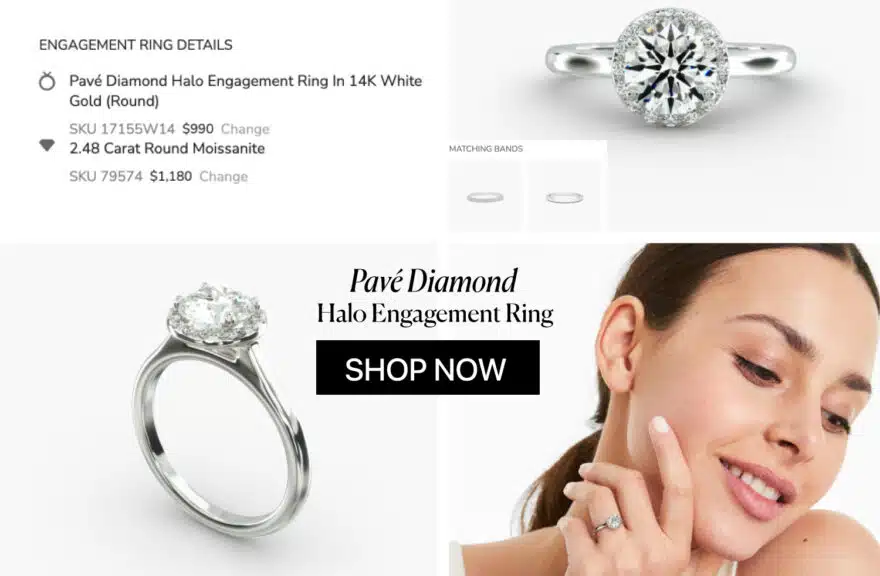
On the hand, the visual difference is minor. This moissanite faces up with the presence of a 3-carat diamond, and as we’ll see, its setting helps it compete with the much bigger stones. To learn more about this crucial difference, my guide on the weight of moissanite compared to diamond is essential reading.
Here is the true secret of moissanite: it is famously more sparkly than a diamond. Due to its unique chemical makeup (silicon carbide), it has a “double refractive” quality.
I won’t bore you with the science, but here’s what it means for you: it breaks light into more fiery, rainbow-colored flashes than a diamond does. A moissanite doesn’t just sparkle; it puts on a spectacular disco-ball light show.
Analyzing the Setting: The Halo – Your Secret Weapon
The setting for this ring isn’t just a home for the gemstone; it’s a strategic part of the value equation. James Allen has placed this moissanite in a stunning Pavé Diamond Halo in 14k White Gold.
This is a genius move, and here’s why:
- It Magnifies the Size: The halo of 20 small, natural diamonds creates a seamless, sparkling frame around the 9.05mm moissanite. This “wall of sparkle” completely erases any small size difference and gives the ring a massive, unified presence on the finger.
- It Adds to the Brilliance: The combination of the fiery, colorful flashes from the moissanite and the crisp, white sparkle from the diamond halo creates a breathtaking, multi-dimensional light show.
- It Adds Perceived Value: A halo setting inherently looks intricate, luxurious, and expensive.
This setting proves that the question, “Should I Choose Moissanite For My Engagement Ring?” is often answered the moment you see how incredible it looks in a high-quality, diamond-accented setting.
The Verdict: Who is This $2,170 Ring For?
This ring is for the unapologetic value maximizer.
This is for the person who wants the absolute biggest, most brilliant, “is that a searchlight on your finger?” wow-factor for their money. This is for the couple who would rather put that extra $13,000 (or $94,000!) towards a down payment on a house, a spectacular honeymoon, or simply their future.
It’s for the savvy, confident buyer who values what they can see—the beauty, the size, the insane sparkle—above the invisible story of a stone’s origin.
For a complete look at what makes this gemstone so special, my Moissanite Diamond Engagement Rings Guide is your next stop. This ring is, in every sense of the word, the ultimate secret.
Side-by-Side: The Three Paths to a 4-Carat Look
We’ve been on an incredible journey. We’ve looked at a masterpiece of nature, a marvel of science, and the ultimate savvy secret. We’ve dived deep into GIA certificates, analyzed the craftsmanship of intricate settings, and stared down some seriously jaw-dropping price tags.
Now, let’s put it all on one simple, powerful table. This is the entire quest, the bottom line of our mission, summed up at a single glance.
| Factor | Natural Diamond | Lab-Grown Diamond | Moissanite |
| The Look | Timeless, classic brilliance. | Icy-white, fiery brilliance. | Brilliant, fiery sparkle. |
| The Prestige | Heirloom status, a true rarity. | A modern, technological marvel. | The ultimate value secret. |
| The Price | ~$96,850 | ~$15,910 | ~$2,170 |
My Final Call: Which Path is Right for You?
So, what does this all mean for you? As your friend and guide in this business, my job isn’t to tell you which one of these rings to buy. My job is to give you the honest, unfiltered truth so you can make the most confident choice for your life, your love, and your budget.
After seeing it all laid out, the real “secret” isn’t which stone is best—it’s that a platform like James Allen finally gives you the power to choose your own path without sacrificing quality.
You Should Choose the Natural Diamond Path If:
You are a purist at heart. The billion-year-old story of a diamond unearthed from the earth holds a magic for you that nothing else can replicate. Rarity and tradition are your primary drivers, and your budget allows you to invest in a true heirloom piece.
You Should Choose the Lab-Grown Diamond Path If:
You are a modern pragmatist. You believe in science and demand verifiable, top-tier quality for your money. You want a massive, spectacular real diamond, but you’re savvy enough to know that technology has made the dream of owning a D-Color, VVS-Clarity stone a stunning reality. Visual impact and smart value are what you’re after.
You Should Choose the Moissanite Path If:
You are the ultimate value maximizer. You want the biggest, boldest, most brilliant “wow” factor imaginable for a budget that seems impossible. You’re the kind of person who would rather have a ring that looks like a hundred thousand dollars and use the massive savings to put a down payment on a house.
At the end of the day, that’s why I have so much respect for a company like James Allen. They don’t just cater to one type of buyer. They’ve built the ultimate modern jewelry store—a platform that empowers everyone.
Whether you’re the purist, the pragmatist, or the savvy saver, they have a world-class, beautifully crafted option waiting for you. This commitment to quality and choice is a core part of their DNA, a fact that’s evident even when you compare their premium cuts, like we do in our Astor vs. True Hearts review.
True Hearts is James Allen's collection for the visual perfectionist. These diamonds represent the top 1% of all diamonds graded for cut quality, specifically screened for flawless optical symmetry—what the industry calls "Hearts and Arrows." From my professional standpoint, this is as close to a perfectly cut diamond as you can get, and James Allen gives you the tools to see it for yourself.
WHAT WE LOVE ABOUT THIS COLLECTION:
- Verifiable Hearts & Arrows Pattern: The ultimate visual proof of a masterfully cut round diamond.
- Advanced Imaging Included: ASET and Idealscope images are provided to let you analyze the light performance like a pro.
- AGS "Ideal" Certification: Many True Hearts diamonds carry the coveted AGS Ideal grade—the industry's most stringent for cut.
- Unmatched Visual Scrutiny: Combines the Hearts & Arrows precision with James Allen's best-in-class 360° HD videos.
- Empowers the Buyer: You don't just have to trust a report; you get the visual evidence to confirm the diamond's superior brilliance.
- Guaranteed Eye-Clean Perfection: These stones are hand-selected to be free of any distracting inclusions to the naked eye.
They give you the keys, show you all the doors, and trust you to choose the path that’s perfect for you.
Your 4-Carat Questions, Answered
Okay, let’s pause and breathe for a second. We’ve just looked at some massive rings with even more massive price differences. It’s a lot to take in. My experience tells me that right now, you’re probably asking a few very specific, very practical questions.
Let’s tackle them head-on, with the direct, honest answers you deserve.
The Secret Isn’t the Stone, It’s the Choice
We’ve just been on a whirlwind tour, from the earth’s mantle to the scientist’s lab to the heart of a fallen star. We’ve seen three stunning rings, three radically different philosophies, and three price tags that tell a powerful story about what “value” really means in the 21st century.
So, where do we land?
As your friend and jeweler, here’s my final take: The most incredible thing we’ve discovered isn’t one of these rings. It’s the fact that they can all exist, at this level of quality, on one single website.
The true secret isn’t about which path is “right.” It’s about finally having the power to choose your own.
- You can choose The Path of Rarity with the natural diamond, knowing you have a timeless, billion-year-old heirloom.
- You can choose The Path of Perfection with the lab-grown diamond, getting a flawless, top-grade diamond that is a triumph of modern science.
- Or you can choose The Path of Freedom with the moissanite, getting a massive, fiery look and the financial freedom to put your money towards the life you’re building together.
For years, there was only one path. But a company like James Allen trusts you to be the expert of your own love story. They provide the data, they provide the incredible 360° technology, and they provide the world-class craftsmanship. Then, they step back and let you make the choice that’s perfect for you.
That, my friend, is the ultimate form of modern luxury.
Your Journey From “Dream Ring” to “Real Ring”
You now hold the treasure map. You know the secrets to achieving your dream look, no matter your budget. You’ve seen the proof that the impossible is, in fact, possible.
But a ring on a screen and a ring on your finger are two different worlds. Your final step is to navigate the practical, real-world questions of turning that dream into a reality. These are the guides I’ve written to get you across the finish line.
First, Master the Art of the Purchase
You’ve chosen your path; now let’s make sure you get the absolute best deal and the smoothest experience possible.
- This is non-negotiable. Before you buy anything, get the latest discounts with my guide to James Allen Promotional Codes.
- Want to see how they stack up against the rest of the best? See my definitive list of the Best Places to Buy Engagement Rings Online.
- Feeling spontaneous and in a hurry? Let me answer the urgent question: Can You Buy an Engagement Ring Same Day?
Next, Conquer Your Budget
Whether your budget is a thousand dollars or a hundred thousand, these guides will help you spend it smarter.
- Worried that big prices are the norm? Let me show you another world in my guide to finding stunning Engagement Rings Below $1000.
- Want to time your purchase perfectly? See the insider scoop on whether Diamond Prices Are Dropping.
Finally, Prepare for “Happily Ever After”
The journey doesn’t end when the ring is on the finger. Here are the answers to the questions you haven’t even thought to ask yet.
- You have the engagement ring, and now the wedding band. What’s the right way to wear them? I settle the age-old debate in Which Ring Goes On First?
- How do you protect your beautiful new investment on that once-in-a-lifetime honeymoon? My practical advice on getting a Less Expensive Engagement Ring to Wear While Traveling.
James Allen is widely known for their diamond expertise, but they also offer a select range of certified moissanite stones for shoppers seeking brilliance without the high price tag. Each moissanite comes with authentic certification, and many are GIA-certified, ensuring transparency, quality, and peace of mind. With stunning sparkle, ethical sourcing, and James Allen’s signature high-resolution imaging, moissanite is a smart, stunning alternative for modern couples.
WHAT WE LOVE ABOUT IT:
- Certified moissanite, including options with GIA certification—a rare find in the industry.
- High-quality stones with exceptional brilliance and clarity.
- More affordable than diamonds, with significant savings on engagement rings and fine jewelry.
- Access to James Allen’s 360° HD imaging, so you can inspect every facet before you buy.
- Backed by James Allen’s 30-day return policy, lifetime warranty, and free resizing.
- Same excellent service, packaging, and support as their diamond collections.
WHAT TO KNOW:
- Smaller moissanite selection compared to diamonds or lab-grown options.
- Not always featured prominently on their website—may need to request or inquire directly.
- Best suited for buyers who value certification and visual transparency over brand variety.


